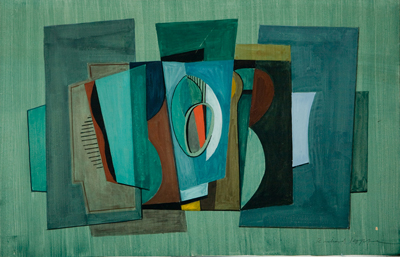
Richard Koppe, American (1916-1973)
18 inches H; 27 3/8 inches W
Works Progress Administration Allocation
1943.502.009
HOW IS IT MADE?
As you may have noticed, the twelve-color paint set you used in elementary school is remarkably different in consistency than the can of paint you used to paint your room. Painters chose from a variety of paints. Painting mediums fall into two major categories: water-based paints and oil-based paints. Water-based paints, such as watercolor and acrylic, can be thinned using water, while oil-based paints require a chemical, such as turpentine, for thinning.
The painting process begins by preparing a painting surface. Painting surfaces include canvas, walls, wood, copper, glass, and paper. A painter will choose a surface based on availability and desired texture. Once the surface is ready, the painter will apply an under painting. The under painting is the composition's skeleton. It establishes composition and distinguishes areas of light and dark that will soon be covered by layers of paint.
Painters are not limited to this methodical process. Painters can apply paint with quick and intense movements, scratch into layers of paint to reveal the surface, and even pour, splatter, and drip the paint. Painters explore and push through boundaries of color. They consider the way color of light affects all surfaces. Painters paint to express and interpret their surroundings.
.jpg)
.jpg)


